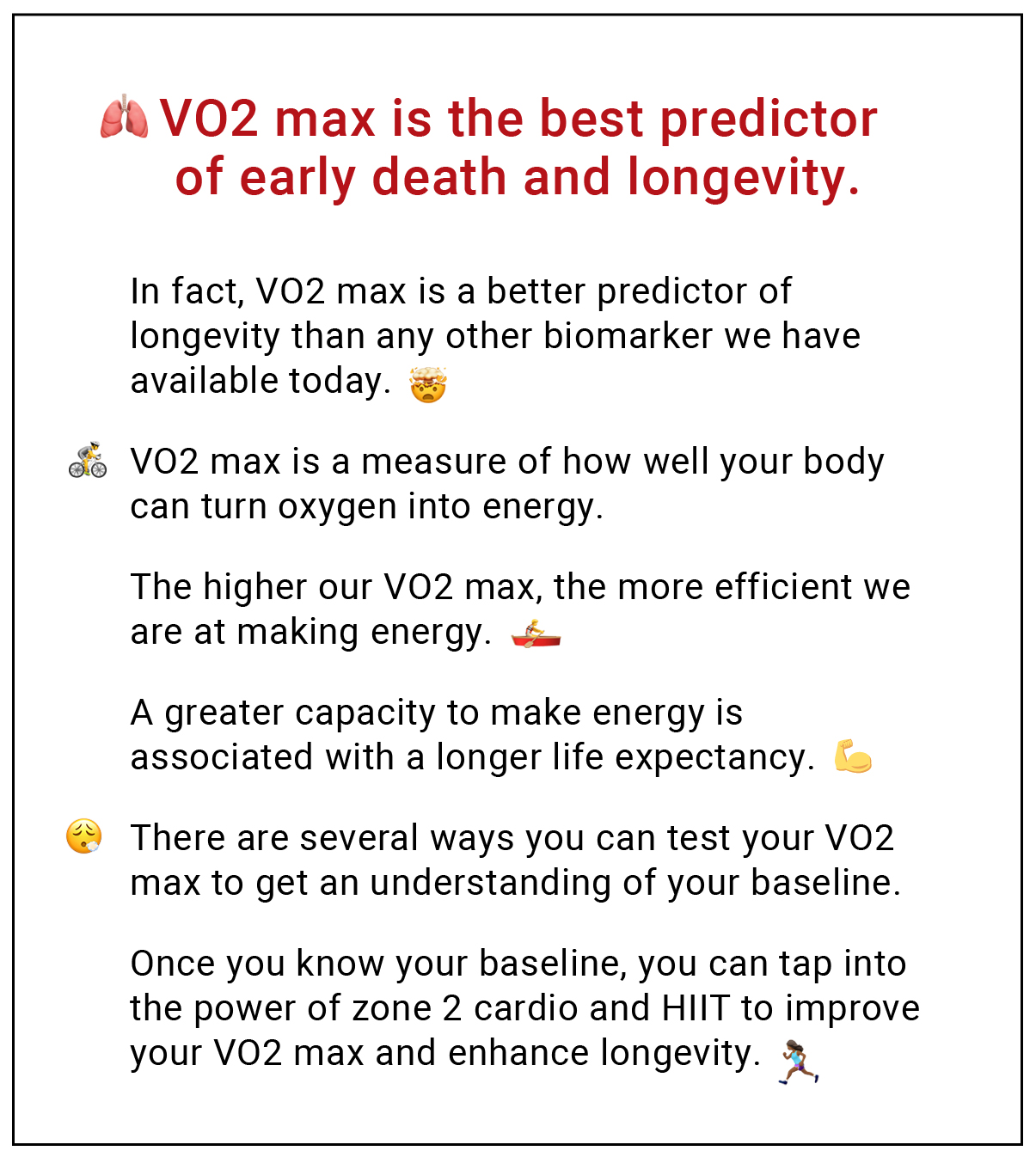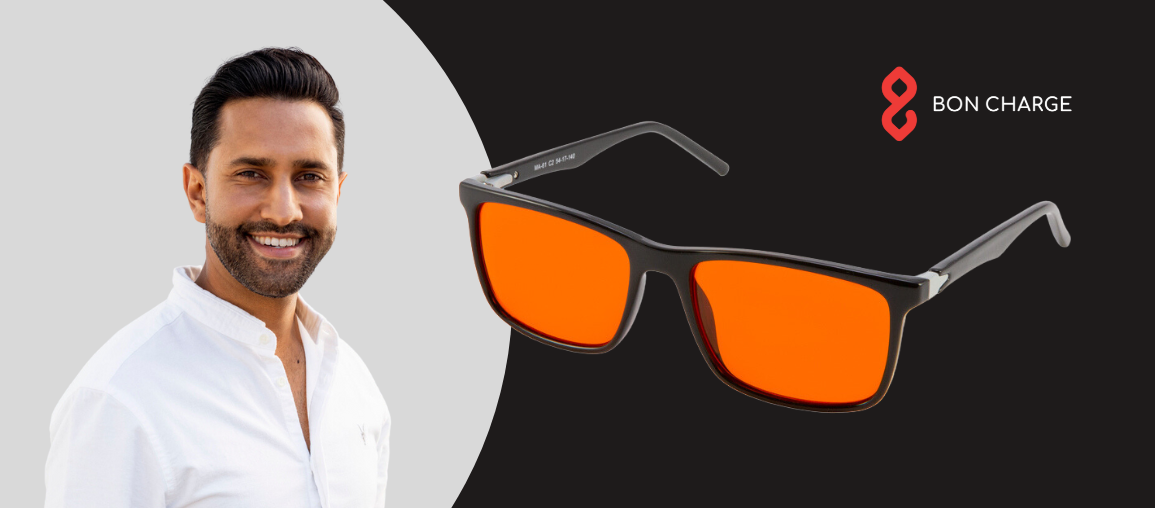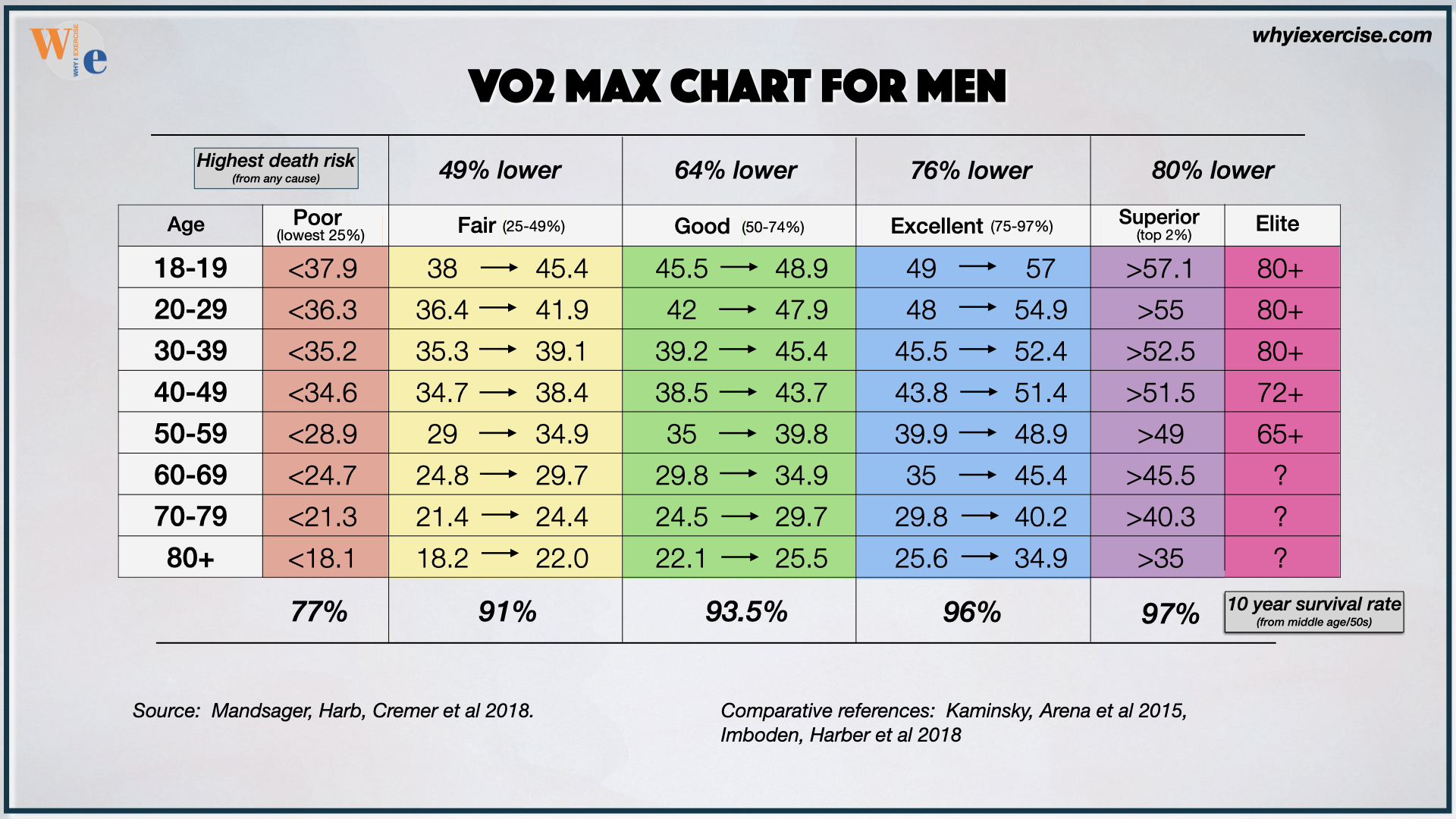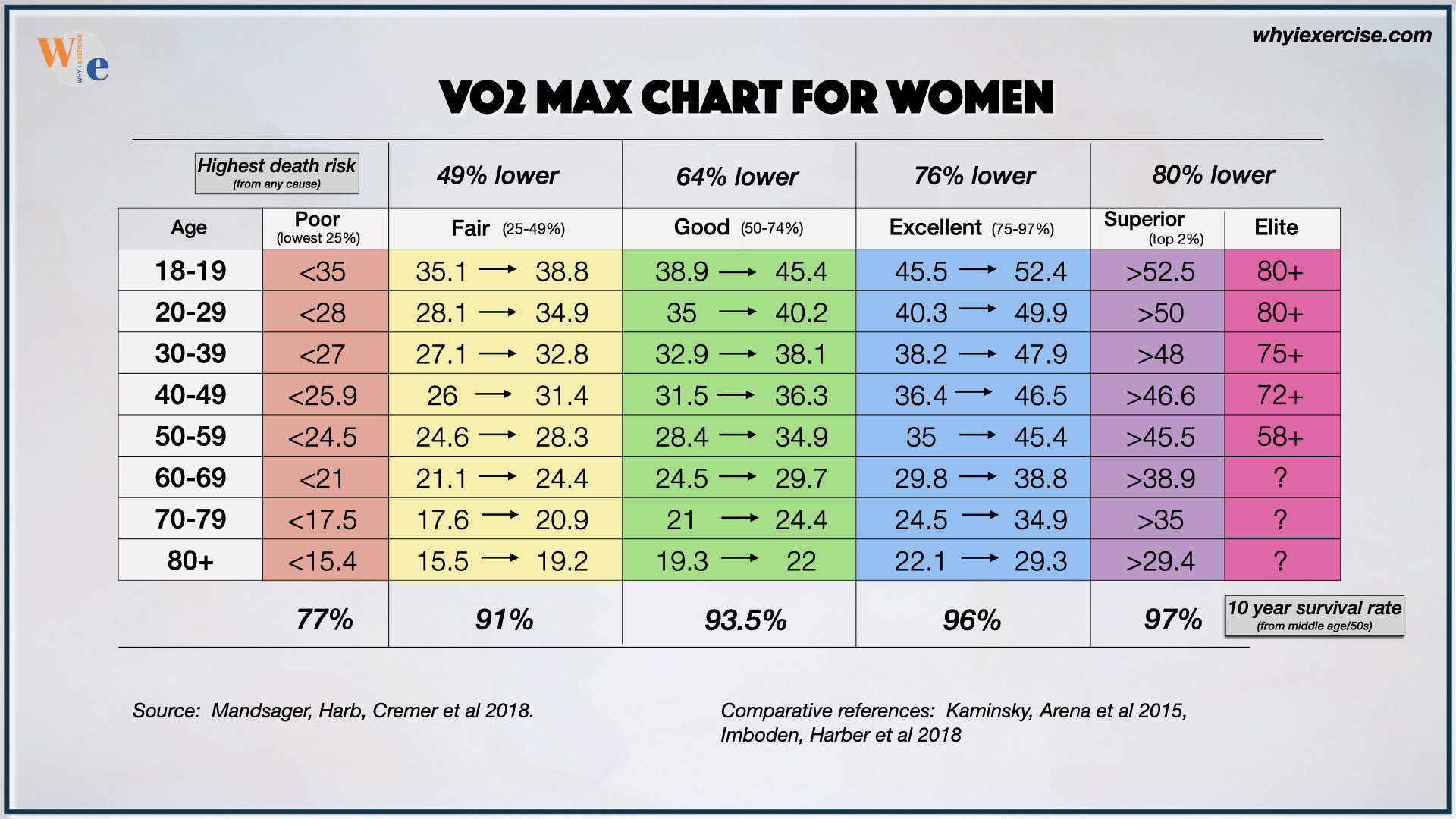
Did you know that VO2 max—a measure of how well our bodies turn oxygen into energy—is the single most powerful predictor of longevity?
No, seriously.
It’s a better predictor for early death than
- High blood pressure
- Being overweight
- Cholesterol, triglycerides, and metabolic health
- And get this—even smoking!
I’m not saying these aren’t important, but based on all the available research, VO2 max beats out all other biomarkers when it comes to longevity.
Dr. Peter Attia presents the research on VO2 max and longevity in his new book, Outlive: The Art and Science of Longevity. The argument he makes is so strong that it inspired me to get my own levels tested. (Be sure to read through to the end to see my results.)
This week we’re talking about VO2 max, how it relates to longevity, the optimal levels to strive for, and how you can start taking steps to increase your levels today.
But first, I want to thank Dr. Attia for really helping me connect the dots for just how powerful of a predictor VO2 max is for our long-term health.
To learn more, I highly recommend picking up a copy of his book, which is packed with tips for optimizing your longevity.
Making sure your light environment is dialed in is super critical for getting a good night’s sleep. That’s why blue light blocking glasses are at the top of so many experts’ lists for safeguarding your circadian rhythm.
My favorite blue light blockers are from BON CHARGE. Their amber-tinted lenses are specifically designed for sleep and scientifically tested to filter out all junk light. I’ll put mine on an hour before bed, and it tells my nervous system it’s time to wind down. And I know they work because when I forget to wear them, it’s harder for me to fall asleep, and I feel way less rested the next day.
Right now, BON CHARGE is offering my community 25% off any of their wellness products. But you’ll want to act fast. This offer is only good until July 7th!

What Is VO2 Max?
When you breathe in, oxygen enters your lungs and is transported to your cells, where your mitochondria use it to make energy. After oxygen is used, it is exhaled in the form of carbon dioxide.
VO2 max is the maximum rate at which your body can use the oxygen you breathe in to make energy. The higher your VO2 max, the better your body is at producing energy, which is why it has long been associated with fitness, endurance, and now, longevity.
How Does VO2 Max Relate to Longevity?
Dr. Attia has summarized the research, which shows people with a high VO2 max are generally healthier and live longer than those with a low VO2 max. This is because VO2 max is strongly correlated with the health of our mitochondria.
The better our mitochondria function, the better we can convert oxygen into energy, and—most importantly—the better we can function, which is super important for healthy aging. Regular exercise, specifically cardiovascular exercise, is key for keeping our mitochondria healthy as we age.
How Zone 2 Cardio Lays the Foundation for VO2 Max
Before increasing our VO2 max, we need to have some level of aerobic fitness, and zone 2 cardio is a great place to start. Zone 2 cardio takes on many different forms (e.g., brisk walking, biking, swimming, rowing). The key is getting your heart rate up to about 60%–70% of your max (approximately 220 bpm minus your age).
If you don’t have a wearable to monitor your heart rate, try the talk test. In zone 2 exercise, you should be able to talk, but not have a full-blown conversation, and hold this level for an extended period of time before reaching exhaustion.
VO2 max builds on zone 2 and is slightly more challenging because it requires pushing your body harder but for less time. This helps to strengthen and create more robust mitochondria. How hard you push yourself depends on your goals as you get older.
Determining Your VO2 Max Goal
Dr. Peter Attia says the intensity you want to strive for while training your VO2 max depends on your goals as you get older. Do you want to run a marathon? Backpack through Europe? Play a pickup basketball game with friends? Chase your grandchildren around the backyard without getting tired?
Your “why” will determine how hard and frequently you want to train your VO2 max. It will also determine the percentile you want to shoot for.
As you can see by the charts below, you want to strive for at least a “good” VO2 max standing.
It is also worth noting that the higher your VO2 max, the lower your risk of death, so it doesn’t hurt to set the bar high and aim for an age group that’s younger than yours.


Try This:
1. Start with training in zone 2 consistently. You won’t want to jump into VO2 max training right away if you’re new to exercise. You’ll need to build a foundation of aerobic fitness first. I
f you’re just starting out, Dr. Attia recommends two 30-minute sessions of zone 2 cardio per week. Once you get acclimated to that, increase it to three hours of zone 2 activity per week (180 minutes total). You can split this up however you want. Stick to training in zone 2 for about five-to-six months or until it’s no longer tiring.
2. Try HIIT to increase VO2 max. After building a solid zone 2 baseline (or maybe you’re already there!) you can start training your VO2 max.
In a meta-analysis of randomized controlled trials, HIIT (high intensity interval training) workouts helped improve VO2 max scores for the general population. Researchers reported improvements with short intervals of intense exercise (30 seconds or less) at a low volume (a total of five minutes per session) for four weeks or less.
However, longer intervals (two minutes or more) at a higher volume (15 minutes or more per session) for four-to-12 weeks correlated with even greater improvements in VO2 max.
3. The 4×4 protocol for increasing VO2 max. In this YouTube video, Professor Richard Faragher shares how he achieved his best VO2 max at 61 years old, raising his level from 45 to 54 (a 20% increase) and putting him in outstanding metric for his age group. He did this by following a four-by-four protocol at least one time per week:
- Run (or bike, row, swim, climb, etc.) at the fastest pace you can for four minutes.
- Rest for four minutes.
- Repeat four times for a total of 32 minutes.
In line with Dr. Attia’s recommendations, Dr. Faragher swapped out one zone 2 cardio session per week with the four-by-four protocol and continued to resistance train and do the occasional HIIT workout.
Measuring Your VO2 Max
The gold standard for measuring VO2 max is a breath test at an exercise lab or gym. The test requires you to wear a mask that measures the oxygen you inhale and the carbon dioxide you exhale while on a treadmill, stationary bike, or rowing machine.
Some wearables can monitor and track your VO2 max. Garmin is the most popular, and newer versions of the Apple Watch and Fitbit can also estimate VO2 max. But from what I gather from my friends in the space, wearables are not as accurate at measuring VO2 max as a breath test.
The good news is more and more gyms are doing VO2 max testing. After a Google search, I found a gym near me called TriFit Santa Monica that had the proper equipment and a technician who knew how to interpret the results.
My Experience with Testing My VO2 Max
Here’s a little bit more about my VO2 max breath test experience so you can know what to expect in case you want to get yours done.
The first thing to note is cost. A VO2 max breath test ranges from about $150 to $350. My test cost about $250. Not cheap, but not crazy expensive either, considering VO2 max is the most powerful marker of longevity.
The second thing is preparation. The folks at TriFit told me to fast for four hours prior to my test. Also, be prepared to wear a mask during the test. I’m not one to get claustrophobic, but the mask can be a little uncomfortable for some. Thankfully, you don’t have to wear it for long. My entire test took about 20–30 minutes to complete.
And finally, you’ll want to choose the test that best suits you. The most popular way to test VO2 max is on a treadmill, which involves walking at a brisk pace and increasing your speed every two minutes until you hit exhaustion. This is what I did. But in hindsight, I kind of wish I had done the stationary bike or rowing machine.
Even though my test went well, I wound up having to stop early because I was experiencing significant knee pain. This wound up giving me a lower score than expected, which was disappointing to say the least, since I felt like I could have kept going if it weren’t for that.
If you’re not a runner, like me, find a testing center that offers rowing or biking as an option to capture your true VO2 max. I plan on going back to TriFit in a couple of weeks and doing a retest on the rowing machine to see my true results.
My VO2 Max Results
Now for my results! I scored a 46, which is considered “excellent” for a 40-year-old male. To be honest, I was hoping to score in the low-to-mid-50s based on a few of my friends’ scores and because I do HIIT and zone 2 training fairly regularly.

But I’m still glad I took the test to get a general sense of my baseline. I would recommend the breath test to anyone who is interested in longevity and has the financial means to do it.
I’ll keep you posted when I retest on the rower to see if I can break into the 50s in addition to the protocol I’ll be following to increase my score even further.
My Goals Moving Forward
From what the technician at TriFit told me, a score of 46 is a good score for my age. For comparison, 50 to 60 would be endurance-athlete status, 60 to 70 would be a professional athlete or elite runner, and 70 and above is like an Olympic-level athlete’s VO2 max.
I’m not trying to achieve an Olympian-level VO2 max, but I do want to aim high. My goal is to increase my score so that I’m in the top percentile of 18-year-olds (low-to-mid-50s) and maintain that level into my 40s, 50s, and beyond.
I recently had Bryan Johnson, the founder of the Blueprint framework, on the podcast. He shared that his VO2 max was in the top 1.5% of 18-year-olds (high 50s), so I know that my goal is for sure possible.
It’s Never Too Late to Improve Your VO2 Max
It is never too late to work on improving your VO2 max, no matter how old you are. If you want to improve your healthspan significantly and potentially even your life span, it’s important to start thinking about VO2 max and start taking action now to raise your levels.
I’m a huge fan of Dr. Attia. I’ve learned so much through listening to his podcast, and I love how passionate he is about the value of exercise for overall health and longevity.
I highly recommend picking up a copy of his book for a breakdown of longevity that’s easy to understand with low-cost tools you can apply to your daily life to optimize your healthspan and longevity.
Here’s to your health,
Dhru Purohit